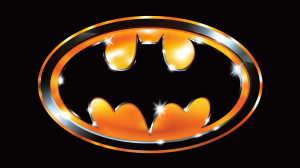
While this industry has produced a number of true winners, like a variety of hits, sequels and hardware that continues selling like hotcakes, there are also a few notable losers, games that had promised so much within the industry, but either came up short, or ended up failing due to a decision within its marketing – or, in some cases, a little bit of both.
Videos by ComicBook.com
We’ve seen some interesting failures over the past few years, though companies have since gone on to produce better games and/or hardware since then, although some have, unfortunately, shut down. Whatever the case, these particular games remain fascinating to look back upon, if only to wonder, “What could they have done differently?”
So let’s look back now at some of the video games that were notable failures, and why they didn’t end up doing as well as they could have.
E.T. The Extra Terrestrial (Atari, 1983)
Perhaps the most notable of the bunch, Atari’s adaptation of E.T. for Atari 2600 was produced in record numbers, with the company hoping it would send copies flying off the shelves with the hype from the film. Alas, it did the opposite, and it actually led the company to bury copies in the New Mexico desert, amongst other assets. In fact, E.T. is (incorrectly) blamed for causing the downfall of the video game industry in 1983, though oversaturation is truly to blame.
So what went wrong? Well, first of all, Howard Scott Warshaw was given very little time to get the game put together – a mere five weeks. As a result, some corners were cut, and the game wasn’t nearly as fleshed out as they could have been.
And Atari paid a record amount of money for the license, around $25 million, so it was putting a lot of hope into the game, even though it only managed to sell 1.5 million copies. Atari was sold and divided just a year later, but would eventually return to the industry to make new products, like the Atari Jaguar.
But, again, Warshaw wasn’t to blame, and while E.T. was a lackluster effort, it was pretty stunning that someone could put it together within just over a month’s time.
Nintendo’s Wii U (Nintendo, 2012)
For a company that had produced a number of hot-selling consoles, the Wii U was a surprising failure for Nintendo. The system first arrived in 2012, with a game unit combined with a tablet-like controller. The company had put together a decent line-up of launch games, but interest soon waned in the console, mainly due to its oddball design, its lack of third-party support, and its lack of interest from its core audience. The system only sold about 14 million units in its lifespan – a number that the Nintendo Switch is about to eclipse in its first year.
So what went wrong? Nintendo had a neat idea when it came to console design, but in the face of what the Xbox 360 and PlayStation 3 were doing with networked games and convenience, it just didn’t match up. That, and the lack of third-party support – Activision and EA dropped out very quickly, leaving just a handful of indie and AAA developers on board.
But don’t weep too sadly. The Wii U has become a hit with collectors, and was also home to superb games like Bayonetta 2 and Paper Mario: Color Splash. And Nintendo took the model and improved upon it with the Switch, which has become an incredibly selling system in its first year of release.
Brutal Legend (Electronic Arts, 2009)
It sounded like a formula that was set for success – the talents of Double Fine, the marketing muscle of Electronic Arts, a vast heavy metal theme, kick-ass combat and the verbal stylings of Jack Black, along with appearances by Lemmy and Ozzy Osbourne, amongst other rock legends. Oh, and a world dwelled in a rock-and-roll hell. What could go wrong? Sadly, according to EA, one key decision led to Brutal Legend‘s downfall.
So what went wrong? Both EA and several fans noted one big mistake with Brutal Legend – it wasn’t quite the game they were expecting. While the first hour promises an epic adventure where fans cruise across the landscape and kick enemy butt, it actually ended up becoming a real-time strategy game for the most part, throwing off a great deal of its momentum. As a result, the publisher deemed it a “retail failure” and stopped work on the sequel.
However, many believe that Brutal Legend is a cult classic, and Tim Schafer of Double Fine noted that it wasn’t a colossal failure as noted, as it managed to sell 1.4 million copies. Alas, it’s not likely we’ll be seeing a sequel soon…but you never know. After all, rock never dies.
Duke Nukem Forever (2K Games, 2011)
It almost sounded like it was too good to be true – Duke Nukem’s epic return to gaming! 2K Games and Gearbox Software made the surprise announcement that Duke Nukem Forever would finish development and release in 2011, just in time to “save the game industry,” as it were. However, the title did anything but, and it ended up being a much costlier failure than anyone could’ve expected.
So what went wrong? When it released, the jarring difference between what Gearbox had done with the game and what 3D Realms did in previous development was like night and day. That, and a lot of players were turned off by the gameplay and Duke’s over-the-top attitude, which was going too far – even for Duke.
It’s unknown just how much money was lost, but it’s reported that 3D Realms head George Broussard actually lost around $20-$30 million of his own money. But it looks like both 2K and Gearbox emerged unscathed, and Nukem would eventually return as a bonus character for the developer’s Bulletstorm revival, Full Clip Edition.
Daikatana (Eidos Interactive, 2000)
At a time when first-person shooters were thriving, John Romero, the man behind Doom, was working on something new, and proclaimed Daikatana to be the “next big thing” in the industry. As a result, millions of dollars were poured into the game’s marketing, and players were getting excited for what it had to offer. Alas, the end result wasn’t much.
So what went wrong? Too much hype into a product that didn’t live up to it. Many players complained about Daikatana having an unfinished appearance, mainly due to bugs and poor level design. On top of that, uninteresting enemies and poor gameplay failed to keep them around. Even the N64 version ended up being one of the worst selling games for the platform.
Shooters have since recovered, but Daikatana serves as a very important lesson – don’t let marketing overtake the game content. Ever.
Beyond Good & Evil (Ubisoft, 2003)/Okami (Capcom, 2006)
We’re coupling these two together because they’re the rarest kind of failure – games that are actually pretty damn good, yet didn’t quite have the outreach that the publishers were looking for. Both Beyond Good & Evil and Okami offered compelling gameplay experiences, as well as beautiful art design, but yet, oddly enough, they failed.
So what went wrong? More than likely, something in the marketing. Beyond Good & Evil didn’t get nearly the marketing push that other hits like Tom Clancy’s Splinter Cell and Prince of Persia: The Sands of Time did; and Okami didn’t get much of a push either. As a result, both games were deemed commercial failures, and Clover Studio, the team behind Okami, was dissolved, though most of the team members would later reform the notable Platinum Games.
But it’s weird how things come back around. Okami HD has since been re-released, and has found a much larger audience this time around on PlayStation 4 and Xbox One. And, years after its initial announcement, Beyond Good & Evil 2 was confirmed by Ubisoft during last year’s E3 press conference, to thunderous applause. (And an HD port for Beyond Good & Evil came out for Xbox 360/One and PlayStation 3 to boot!)
Battleborn (2K Games, 2016)
Following the success of its Borderlands games, Gearbox Software returned to the quirky side of gaming with its co-op supported shooter Battleborn, which 2K Games was hyping as the next big thing in the genre. The game features a unique cast of characters, as well as strong support for multiple players, and many modes. Unfortunately, it just didn’t live up to the hype – though it wasn’t really Gearbox’s fault.
So what went wrong? To be honest, Battleborn isn’t that bad a game – it offers a fair share of thrills for players who like this sort of thing. But 2K failed to anticipate a much larger game on the horizon – Overwatch. Blizzard’s multiplayer game arrived in the same month as 2K’s release, and it just didn’t stand a chance. As a result, it still sold decently, but the competition was just too much for it to bear. Gearbox has since switched it over to a free-to-play format, but Overwatch continues to thrive in its place.
That said, Gearbox is back doing what they do best, reportedly putting work into the next Borderlands game. And it’s not like it’s the only company that has run across Overwatch‘s power – it appears that Boss Key Studios’ LawBreakers is taking an even more disastrous path, with a heavily dwindling player count and lack of interest.








